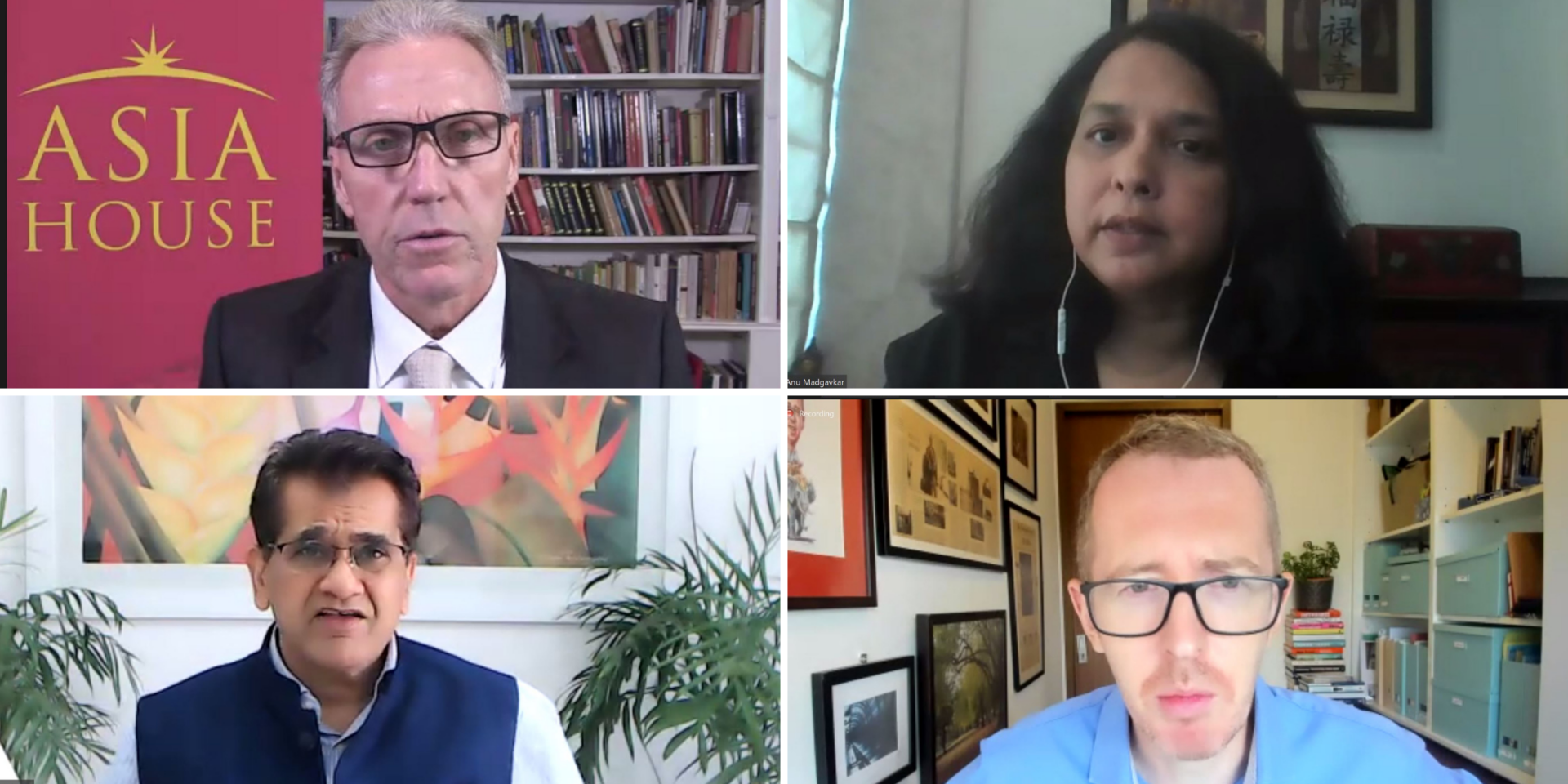Driving commercial and political engagement between Asia, the Middle East and Europe
Driving commercial and political engagement between Asia, the Middle East and Europe
Driving commercial and political engagement between Asia, the Middle East and Europe

The next six-to-twelve months are “going to be critical” for India’s economic prospects, Anu Madgavkar, Partner at McKinsey Global Institute (MGI) told an Asia House roundtable today (27 October).
Outlining the findings of a recent MGI report, Madgavkar said swift government reforms are needed to help India overcome the economic impact of COVID-19 and seize the opportunities presented by emerging global trends, including rapid progress in automation and AI, shifting global value chains, and increasing efforts to combat climate change.
“We have a window of six-to-twelve months to push much of this through and that period will be decisive,” Madgavkar said. “It is a leadership moment.”
Senior policy and industry figures joined the roundtable – held in partnership with MGI – with Amitabh Kant, CEO of the National Institution for Transforming India (NITI Aayog), and James Crabtree, Associate Professor of Practice at the Lee Kuan Yew School of Public Policy, sharing their insights. Lord Bilimoria, President of the CBI, and Asia House Chairman Lord Green also participated in the discussion.
Four pillars
The MGI report, ‘India’s turning point: An economic agenda to spur growth and jobs’, includes some striking figures. India’s economy has contracted in the first quarter of the fiscal year by more 23.9 per cent, and analysts believe contraction for the whole year is likely to be in the range of 9-12 per cent. “This is on the higher side, even relative to many other economies,” Madgavkar said. Amid this challenging growth picture is the need to create around 90 million non-farming jobs by 2030.
To meet this need, India would require triple pre-COVID-19 job growth levels, and roughly double pre-COVID GDP expansion, to 8-8.5 per cent growth annually.
The MGI report outlines four key pillars to help achieve these ambitious aims: building frontier businesses that are more productive than others; increasing scaling and competitiveness in the corporate sector; increasing the scale and speed of reforms being rolled out; and financing this growth by securing $2.4 trillion from across banking and capital markets by 2030.
Bouncing back
Despite the scale of the challenge outlined in the McKinsey report, Amitabh Kant, CEO of NITI Aayog, was optimistic about India’s economic prospects. While acknowledging the record contraction in GDP, he also said that India’s GDP growth was “bouncing back” and “is expected to rebound sharply”.
He emphasised the need to sustain momentum, adding that the key enablers of India’s growth story going forward will include greater integration into global supply chains, achieving size and scale in manufacturing and adopting technology across all spheres.
“FDI will play a major role” Kant added, “and FDI has already been heavily liberalised.” He cited the state-based approach to boosting ease of doing business in India, which has yielded positive results so far.
But challenges remain, including logistics and energy costs, “which must fall,” he said, noting that “this will require a great deal of political will.”
Geopolicy drift
For James Crabtree, Associate Professor of Practice at the Lee Kuan Yew School of Public Policy and author of The Billionaire Raj, that political will may not be best placed to tackle the challenges.
“There are some ways in which the government appears to be going away from the direction that is suggested in this report,” Crabtree said, citing “the self-reliance programme, the direction of tariffs, the decision not to go into the RCEP trade agreement,” as policies that might undermine manufacture-driven growth.
However, Crabtree highlighted a geopolitical opportunity that India could take advantage of. “One of India’s opportunities is to be part of a kind of anti-China zone, where people decide to locate to India because of geopolitical worries in China. And that won’t be just about high-tech manufacturing, because a lot of things that need to be made in factories are getting bound up in this geopolitical competition.”
Madgavkar also emphasised an opportunity in manufacturing, noting that the sector still poses “significant opportunities for India” and that this might be the last real decade where intensive manufacturing can come to India in a larger share.
“We think there is potential for manufacturing to drive about one-fifth of the incremental GDP that India needs,” she said.
Practical dialogue
With senior business and policy figures joining the digital roundtable, practical solutions and recommendations were shared when the chair, Asia House Chief Executive Michael Lawrence, opened up the discussion. Lord Bilimoria, President of the CBI, suggested that the Indian government put money into companies that can invest around the region, enabling the government and the private sector to work together. Lord Green, Chairman of Asia House, was interested in the implementation of MGI’s recommendations, and the need to create a dialogue for reform in India.
Climate change was also discussed, with Sachin Kumar, India Office Leader at Arup, asking what impact India’s commitment to the Climate Action Plan will have on achieving the kind of growth they are aiming for.
For Crabtree, climate change needs to be a key factor in India’s economic planning. “If you don’t get this climate transition right, then that’s going to be a major drag on the job creating industries that [MGI] is talking about in their report,” he said. “So it really should be front and centre now in these conversations.”
WATCH India’s Turning Point: an economic agenda to spur jobs and growth, at Asia House TV
